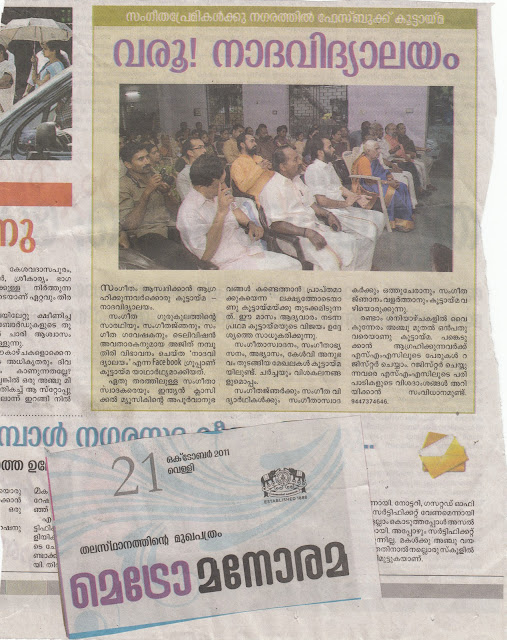http://www.youtube.com/watch?v=sgQwkgvTEaw&feature=related
Nadaswaram is a South-Indian version of Shehnai. It is also Called Nagaswaram. It is substantially larger than the shehnai and has a simple double reed rather that the more complex quadruple reed. It is considered a very auspicious instrument and is found at temples and at weddings. It is normally accompanied by a Sur Peti, Ottu, and a tavil. There is a smaller version of the Nadaswaram which is played in Folk Music and is known Mukhavina.
Nadaswaram, is considered to be one of the most ancient and unique musical instruments of Tamilnadu. It would be appropriate to call this instrument a rare combination of music and divinity. The history and current perspective of the instrument forms the fundamental basis of this presentation.
Our predecessors considered temples as the abode of peace and sanctity. This system of holding the temples as the centre stage of
our culture has prevailed for the last several centuries. Temples have nurtured several arts forms, the important ones being music and dance. Both these formed the basic essence of the bhakti tradition. The credit for such a rich tradition has to be given to the Azhwars and Nayanmars. The Tamil language and the patronage for music were interlinked during the ancient period. The temples in Tamilnadu have been the main inspiration and source of the bhakti tradition. Thus music played a special role as a medium for prayer. Musical celebrations were very popular and Nadaswaram acquired a special status in such presentations. Everyone in the temple precincts and the villages relished the music emanating from Nadaswaram. Thus this instrument became an integral part of temple celebrations throughout south India.
http://www.youtube.com/watch?v=cEfolc8oN8I
http://www.youtube.com/watch?v=2wC3N4-jMwA&feature=related
http://www.youtube.com/watch?v=Eee5jqs3lU4&feature=related
http://www.youtube.com/watch?v=LPYTxf_l_rE&feature=related
http://www.youtube.com/watch?v=-pRIcYRvePc&feature=related
http://www.youtube.com/watch?v=tY64qJHwve8&feature=related
http://www.youtube.com/watch?v=jsxVTT0BBlE&feature=related great Charukesi by TNR!!




















































